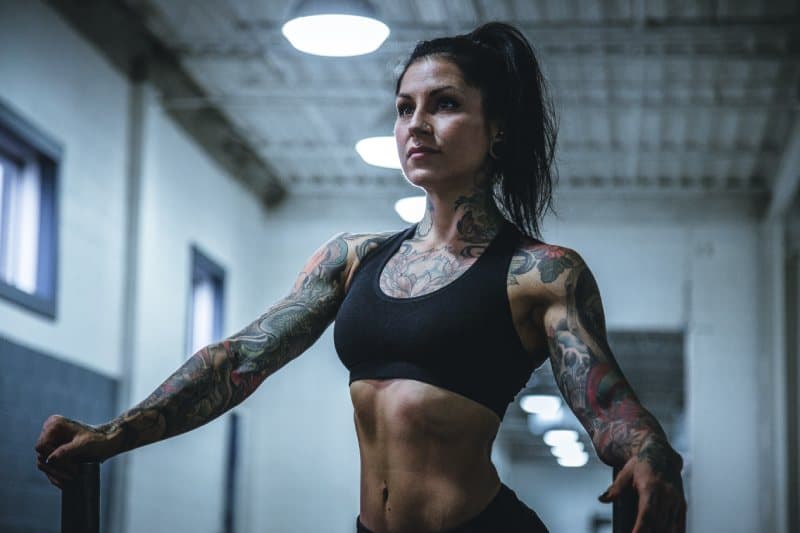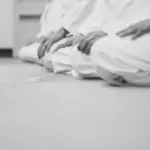Wondering if you can gain muscle training Jiu-Jitsu? Have you been working out in a gym for most of your life and now you’re wondering if you can replace weight training with BJJ? This article goes over if you can build muscle in BJJ, what muscles are used, and what muscles are important for BJJ.
Brazilian Jiu-Jitsu is a dynamic, static, and full-body workout that primarily uses the core and legs. BJJ will strengthen and build some muscle, but your body will quickly adapt to the resistance as BJJ does not provide enough resistance as weightlifting does to cause muscle growth or strength gains.
Adding in 1-2 days of weightlifting per week will help build muscle and gain strength while being able to keep a consistent BJJ training schedule.
If you are a weightlifter, bodybuilder, or powerlifter and hate doing cardio, Brazilian Jiu-Jitsu could be an exciting way of incorporating cardio into your routine!
What Muscles Are Built In BJJ?
The primary muscle groups used in Brazilian Jiu-Jitsu are core, back, forearms, neck, legs, biceps, chest, and triceps – it’s a full-body workout!
BJJ increases static and dynamic strength because of the explosive nature from takedowns, escaping, or transitioning. While holding, framing, wedging, and pinning require a lot of static strength.
During Jiu-Jitsu your core will constantly be engaged – even just maintaining your posture involves using the core. Jiu-Jitsu involves a lot of movements that involve lifting the hips (triangle attempt, for instance), offsetting your body (like a side crunch), or performing a situp/crunch movement – like going for a hip-bump sweep.
The constant pushing and pulling will strengthen your upper body.
Pulling motions, such as pulling on someone to break their posture, will build your back, biceps, and forearm/grip strength. The motion is very similar to rowing.
Pushing motions, like pushing on your opponent to off-balance them, will strengthen your triceps, shoulders, and chest. It’s similar to a bench press; however, much more dynamic.
The legs will get their work in from bridging, squeezing (for example retaining guard, mount, S-mount, half-guard), transitioning, and especially during standup where you’ll be level changing.
Finally, your neck will strengthen because it’ll be used as a post during some transitions, bracing against opponents’ neck attacks, and stabilizing when getting pulled and pushed around.
Is BJJ Enough To Build Muscle?
Brazilian Jiu-Jitsu alone is not enough to build an impressive physique. While BJJ will strengthen and build some muscle (especially for beginners), it is not sufficient to provide enough resistance to cause hypertrophy or strength gains than weightlifting would.
BJJ does increase muscular endurance and improve cardio.
Muscular endurance is the muscle’s ability to exert itself and remain active for extended periods.
Improving your cardiovascular system strengthens your heart which allows it to pump more blood with each beat, improving the flow of oxygen throughout your body.
Does BJJ Build A Good Physique?
The combination of Jiu-Jitsu providing some resistance and intense, interval-like, cardio will cause people to gain some muscle and lose fat. The combination of the two will give someone an athletic build, provided their diet is relatively on track.
An athletic build means a person’s physique is muscular and well-proportioned to their body.

The result will be determined by how active you are in Jiu-Jitsu, much like if you were going to go to the gym. Doing two sets of pulls-yields better results than one set. But doing too many has diminishing returns and can even be detrimental.
Just remember, if you’re looking to build more muscle or improve your cardio it to is best to supplement it.
Will BJJ Get You Ripped?
Brazilian Jiu-Jitsu alone is not enough to get you ripped or shredded. BJJ can help you tone your muscles and shred some fat; however, getting ripped relies on having a strict diet that allows you to stay at a lower body fat percentage.
Incorporating a couple of hypertrophy days can help achieve a more bulky, shredded look as it will build the muscles much more than BJJ alone could do.

Do You Need To Workout When Training BJJ?
You do not need to workout when training Brazilian Jiu-Jitsu; however, incorporating one or two days to strengthen muscles or improve cardio will boost your performance during Jiu-Jitsu and reduce the risk of injuries.
I went into Jiu-Jitsu from a powerlifting background but when starting Jiu-jitsu I stopped lifting to let my body adapt to the movements and strains of Jiu-Jitsu. I decided to not lift for a year afterward to see how it would affect me.
During the first half of the year, my muscles were not getting sore and I was not feeling any effect from not lifting. But, as the year came to an end I notice that I started having sore back muscles, sometimes my legs would feel some delayed onset muscle soreness (DOMS).
Overall, I started feeling my body become sore after training Jiu-Jitsu, which never happened before, even when I just started!
This past year I started incorporating workouts again and within 2 weeks I noticed it as different, both in muscular endurance and the ability to move at a quicker pace. The types of workouts I was doing were HIIT-styled bodyweight (or sandbag) styled workouts. Minimal rest, but lightweight.
So, do you need to workout when training BJJ? No. Does it help? Yes! Even incorporating one or two days a week of pushups, pullups, and squats can have great benefits!
What Are The Most Important Muscles In BJJ?
The most important muscles used in Jiu-Jitsu are the core and legs. The core consists of the belly area, the mid, and the lower back. It assists in stabilizing your body against static and dynamic forces. The legs provide explosive power, a stable base, and the ability to squeeze and control your opponent.
The second most important group of muscles in Jiu-jitsu are the back, neck, and shoulders. The back will help stabilize the core and provide pulling power.
A strong neck allows you to comfortably use your head as a post, defending against chokes, and prevent neck injuries from being able to resist force.
Finally, the shoulders are what connect your arms to your body, strong shoulders mean you can continue using your arms for attacking and defending!
Are Biceps and Triceps Useful For Jiu-Jitsu?
Curious if biceps and triceps are useful for Jiu-jitsu? I wrote two articles going into detail about the benefits of these muscle groups! Although they’re not primary, they can provide many benefits!
Conclusion
Brazilian Jiu-Jitsu is a full-body workout and will build static and dynamic strength and muscular endurance. But, BJJ does not provide enough resistance for hypertrophy to occur in the muscles to give the same results a resistance workout would give overtime.
Your body will initially build the muscles necessary to perform Jiu-Jitsu techniques but will adapt over time. Additionally, once you get more experience in BJJ you will get more effective at the techniques and movements, meaning less muscle and strength are required.
Overall, Jiu-Jitsu will provide some muscle growth in muscle groups you have no used before; however, it will not provide enough resistance like weightlifting does to become big. As you progress in Jiu-Jitsu, it will provide less resistance than when you started as you will be taking advantage of leverages more than using your strength.


